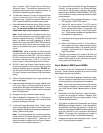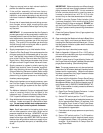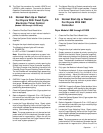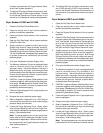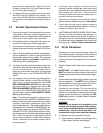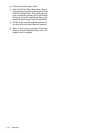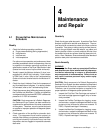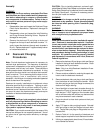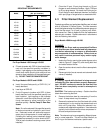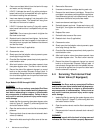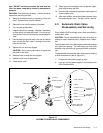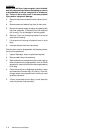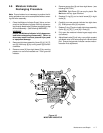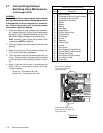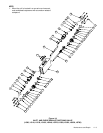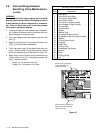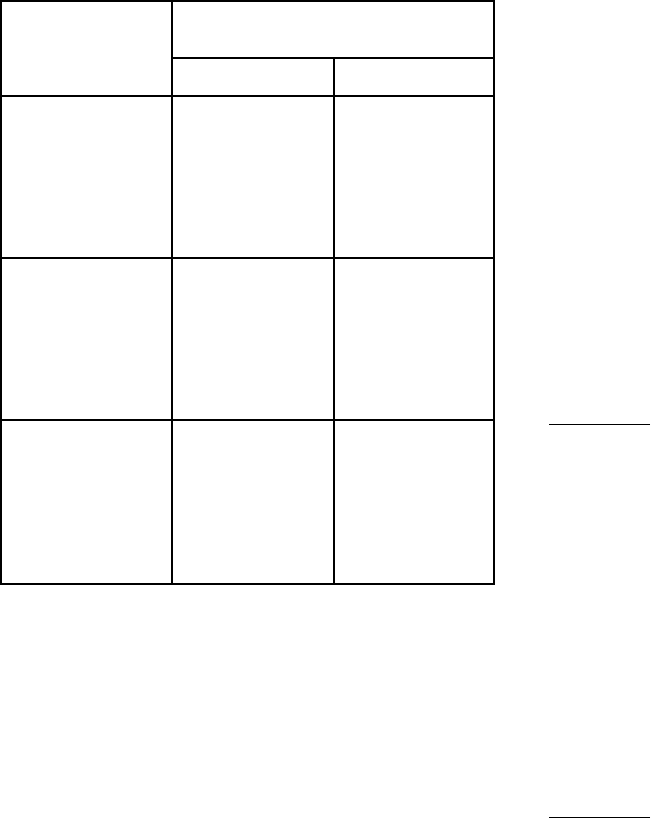
Maintenance and Repair 4 - 3
For Dryer Models LS60 through LS1500
a) Fill each chamber with OPD-4 (4mm bead) desic-
cant until the specified quantity has been in-
stalled. Light tapping on the chamber sides with
a soft-face mallet should yield additional free
space to allow installation of the specified quan-
tity. DO NOT TAMP OR RAM DESICCANT.
For Dryer Models LS2070 and LS2580
a) Install the specified quantity of OPD-25 (1/4"
bead) desiccant.
b) Level layer of OPD-25.
c) Finish filling each chamber with OPD-4 (4mm
bead) desiccant until the specified quantity has
been installed. Light tapping on the chamber
sides with a soft-face mallet should yield addi-
tional free space to allow installation of the
specified quantity. Do Not Tamp Or Ram Des-
iccant.
Note: Do not be alarmed if the specified quantity
of desiccant cannot be installed in each cham-
ber. Desiccant levels will settle after approxi-
mately two to three weeks of normal operation.
Following this “settling” period, desiccant should
be added as necessary to return levels to BOT-
TOM of each chamber’s retaining screen (when
installed).
9. Clean the fill port, fill port plug threads, or fill port
flanges on each desiccant chamber. Apply TFE tape
to fill port plug threads. Re-install the fill port plug or
fill port flange in each desiccant chamber, and torque
drain port plugs or flange bolts to a reasonable limit.
4.3 Filter Element Replacement
Coalescing prefilters and particulate afterfilters are included
with all Hydrobloc LS Series Dryers. The filter elements
should be replaced when the differential pressure gauge on
top of the filter reads 7 to 10 psid, or once a year, which-
ever comes first. Refer to Appendix B for the replacement
element part numbers. Replace elements in accordance
with the following instructions.
Dryer Models LS60 through LS1250
WARNING!
Ensure that the Dryer and any associated Prefilters
and Afterfilters are valve isolated and fully depressur-
ized before attempting to remove or disassemble
any components or subassemblies. Failure to do so
may result in serious personal injury and/or equip-
ment damage.
1. Isolate the filter by opening the system bypass valve
(refer to Figure 2.1, page 2-2), and closing both inlet
and outlet isolation valves.
2. Open the service valve to vent the filter to atmospheric
pressure.
3. Disconnect drain lines at manual and automatic drain
valves (if installed).
WARNING!
A "hissing" sound while the bowl is being removed
indicates the filter has not been properly depressur-
ized. DO NOT continue to remove the bowl until the
filter has been completely vented to atmospheric
pressure.
CAUTION: Filter bowls may be heavy. Caution should be
taken when removing the bowl.
4. Remove the bottom bowl by unscrewing it from the
head. A strap wrench may be needed.
5. Remove the element from the filter head with a brisk
downward pull, or by working the element back and
forth until it snap frees. Discard the element in ac-
cordance with applicable regulations. Used elements
typically hold contaminants such as compressor lu-
bricants and particulate matter.
Note: The element may be unsnapped by differential pres-
sure in normal operation. This will not affect filtration, as
the O-ring on the element maintains a positive seal.
Activated Alumina
Model (lbs. per chamber)
OPD-4 OPD-25
LS60 24 ——
LS110 42 ——
LS130 72 ——
LS185 72 ——
LS240 92 ——
LS270 145 ——
LS360 145 ——
LS505 192 ——
LS630 239 ——
LS760 318 ——
LS1000 416 ——
LS1250 540 ——
LS1500 675 ——
LS2070 875 75
LS2580 1350 150
Table 4.1
DESICCANT REQUIREMENTS



